Almost every concrete contractor has a horror story about trying to build sidewalks that meet the requirements of the Americans with Disabilities Act (ADA). One of the most costly problems is meeting requirements for maximum slope because there is no plus tolerance for the maximum cross-slope of 2 percent. Because of this maximum limit, a measured cross-slope of 2.05 percent almost always results in contractors being forced to remove and replace sidewalk sections at their expense.
Throughout the various stages of construction, an inspector should be monitoring the daily progress measuring running slope and the cross slope. As the City’s ADA Coordinator, I remind the engineers and inspectors that a sidewalk is a service the City provides. As a City we design the cross slope to 1.7%, so if the contractor pours over as long as below 2% the contractor doesn’t need to remove and replace.
ADA Coordinators need to find creative ways to help engineers and inspectors understand the importance of a good design and width of sidewalk. Last year, training the staff was fun! I used twelve different visual impairment goggles to train staff on sidewalk slopes. All twelve of the goggles would create a situation where the learner would be legally blind (20/200 or worse). This pair of goggles is classified as Tunnel Vision.
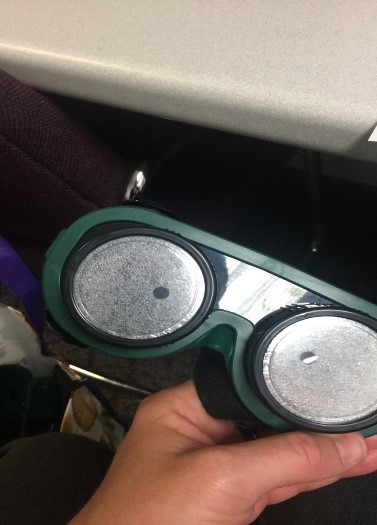
During the training I had the staff walk on a sidewalk next to a state highway, cross at a signalized crosswalk and then continue down a residential sidewalk that was two feet wide with mountable curb. This allowed them notice the following:
- Contact is important;
- Shade can make it hard to tell where the sidewalk ends and the landscape begins;
- You can’t tell that there is mountable curb plus a sidewalk (with the goggles, it all looked like sidewalk and there were some missteps).
The participants realized they took their vision for granted and were happy to take the googles off. When designing, it's important to remember that everyone doesn’t have that luxury of vision. I encourage you to think of your grandparents or people you might know with a disability, even those who may be injured for a few weeks, when you design a site.
Here are some more pictures of our training. Please note that all participants were safe during the training!
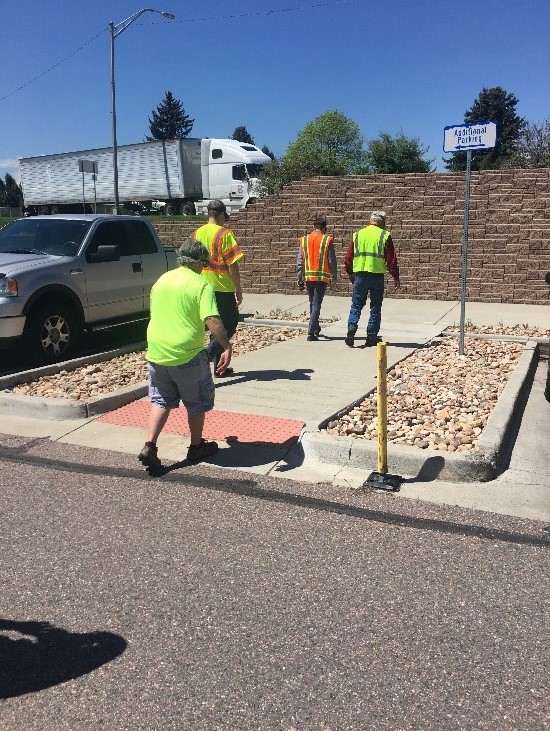
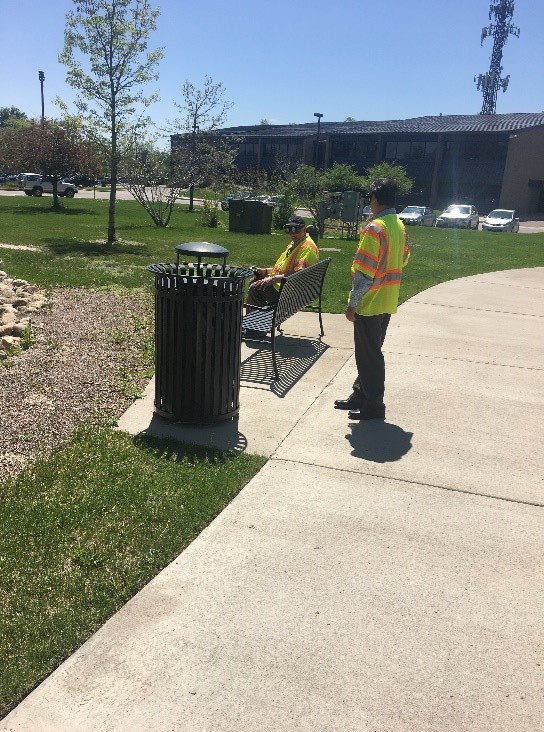
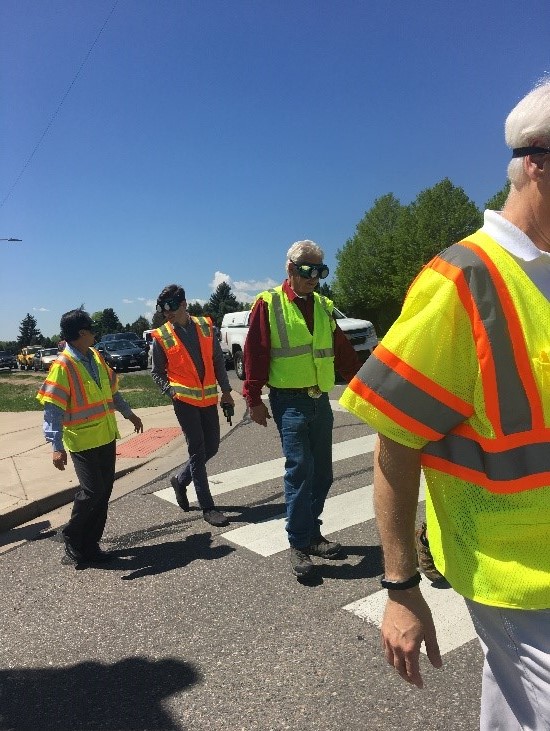
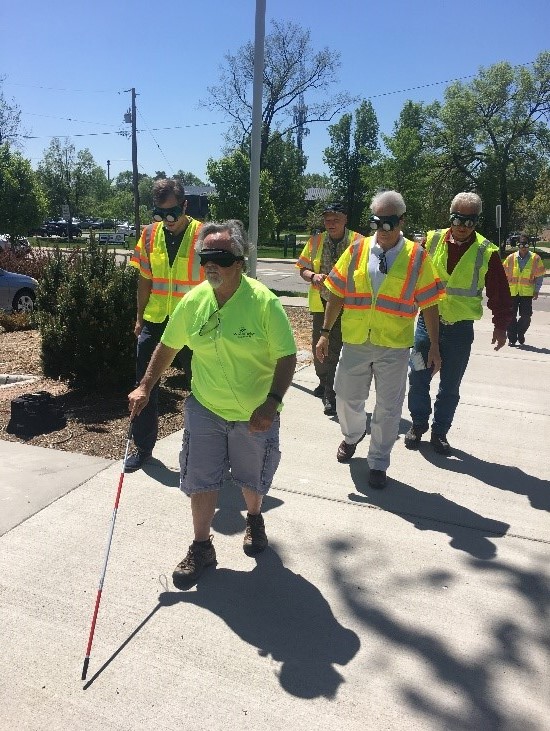
Written by: Kelly Rosson, ADA Title II Coordinator for the City of WheatRidge, CO.